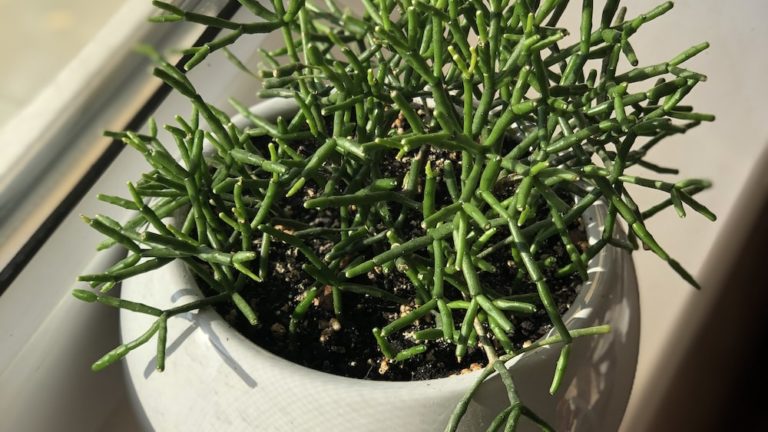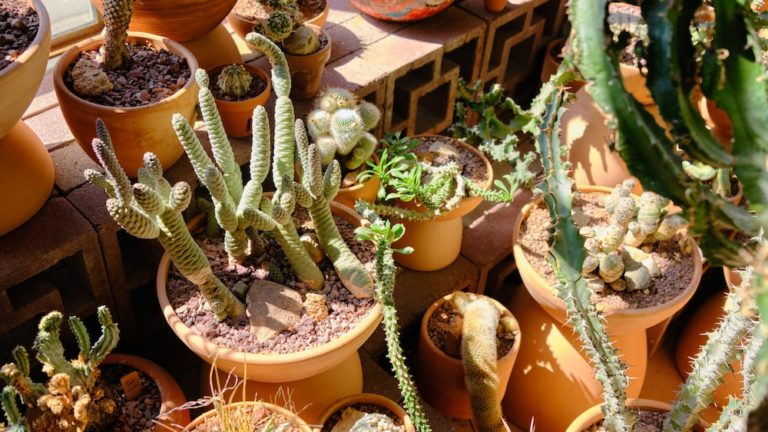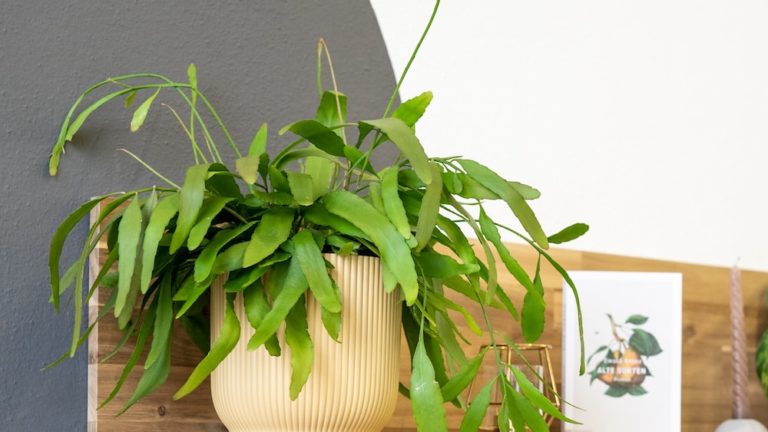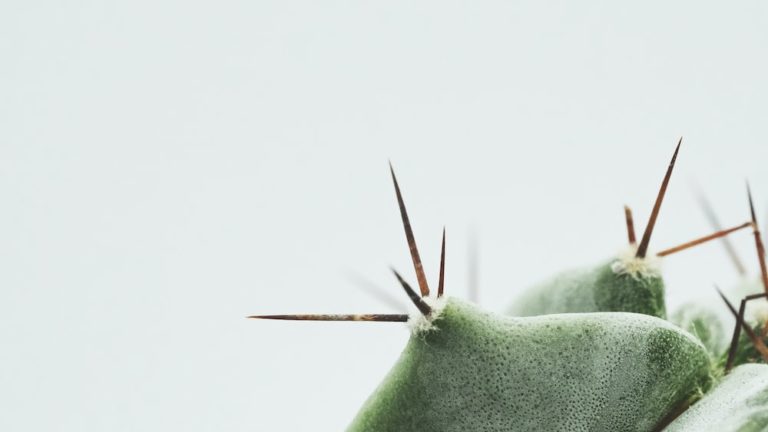How To Pronounce Rhipsalis: Master The Correct Pronunciation

How To Pronounce Rhipsalis: Master The Correct Pronunciation
Hello, fellow cacti enthusiasts! If, like me, you’re captivated by the unique beauty and rugged resilience of these splendid plants, you’ll know there’s a certain thrill in knowing them deeply, intimately, down to their names. Today, we’re delving into how to pronounce Rhipsalis, an enchanting star from the family of pendant cacti.
There’s something so rewarding about being able to greet our Rhipsalis properly, isn’t there? To say her name right. So, join me, Sophia, as we embark on this delightful etymological journey to explore the subtle nuances of the Rhipsalis name pronunciation, dismantling phonetic complexities together, hand in hand.
As we saunter down this path, we won’t just unravel pronunciation mysteries. We’ll also weave together strands of origin stories, and dance around the names of various Rhipsalis types. Let’s begin, shall we?
What is Rhipsalis?
Ahh, Rhipsalis! It’s truly a joy to introduce this wondrous plant in our journey today. Belonging to the captivating world of the cacti, Rhipsalis is a genus known for its distinctive trailing or pendant growth habit. It’s a cornucopia of variety and adaptation, demonstrating just how marvelously diverse our Mother Nature is.
Origin and Meaning of Rhipsalis
When we delve into the name Rhipsalis, it’s akin to stepping into a warm, enveloping narrative brimming with intriguing lore. Originating from the Greek word ‘rhips’ – which translates to ‘wickerwork’ or ‘plait’ – it perfectly captures the characteristic latticed appearance of these quirky plants.
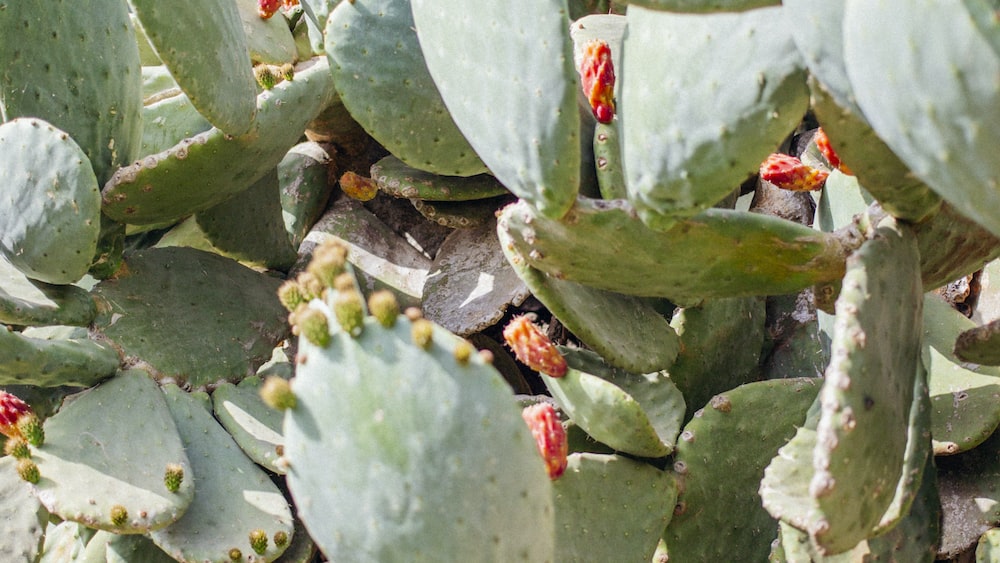
The twist and turns of the Rhipsalis stems is beautifully echoed in their name. You can imagine weavers of old, plaiting baskets or creating beautiful wickerwork that echo the shapes and structure of this enchanting cacti genus. Isn’t it delightful how nomenclature can capture the very soul of a plant?
In the world of botanical nomenclature, Latin dominates, lending an air of timelessness to our green companions. Rhipsalis, true to this tradition, has a Latin origin but reflects a tapestry rich with Grecian threads. A complex and enchanting story etched into a singular word!
The name Rhipsalis perfectly captures the characteristic latticed appearance of these quirky plants, and reflects a tapestry rich with Grecian threads.
Different Types of Rhipsalis
As we continue our exploration, did you know Rhipsalis houses a plethora of distinct characters under its banner? Around 35 species are recognized under this genus, each with its unique charm and characteristics. Some popular types include Rhipsalis baccifera, Rhipsalis cereuscula, and Rhipsalis goebeliana, each with its unique shapes and textures.
Despite their diversity, all members of the Rhipsalis family share the signature trailing stems and exotic allure that make them a particular favourite among houseplant aficionados and cacti lovers alike. It’s a testament to their tenacity, and the resilience so characteristic of these magnificent arid warriors.
Understanding Pronunciation Basics
So, now that we’ve acquainted ourselves with the captivating world of Rhipsalis, let’s dive into understanding the basics of pronunciation. By shedding light on phonetic nuances and equipping ourselves with the right pronunciation techniques, we inch our way a step closer to mastering how to pronounce Rhipsalis.
The Importance of Correct Pronunciation
Ah, one could wonder why it’s essential to know how to pronounce Rhipsalis. But lest we forget, language is a delicate, intricate dance, where every step, every gesture matters. Using correct pronunciation is akin to a perfectly executed twirl – it sends the dance soaring into the realm of enchantment.
When we pronounce plant names correctly, we acknowledge their place in the world, pay homage to their botanical legacy, and pay respect to the scientists who discovered and named them. Most importantly, it allows us to communicate more effectively within our community of plant lovers, fostering a sense of shared understanding and connection.
So, let’s get our pronunciation right; it’s a small gift we can offer these incredible stoic survivors of the natural world. And let’s not forget – it’s part of being a responsible, devoted plant parent!
Common Pronunciation Mistakes
Let me share an anecdote with you; when I first encountered the name Rhipsalis, I fumbled quite a bit. The ‘Rh’ was a hurdle, as was the placement of the sound stress. It seemed somewhat unnerving.
Isn’t it often the case? We stumble upon unfamiliar words and may unwittingly butcher their pronunciation. With Rhipsalis, the common errors include stressing at the wrong syllable or mispronouncing the tricky “rh” at the beginning. But fret not, my fellow cacti appreciators! Today, we learn to dance around these phonetic roadblocks.
We stumble upon unfamiliar words and may unwittingly butcher their pronunciation, but fret not, my fellow cacti appreciators, today we learn to dance around these phonetic roadblocks.
How to Pronounce Rhipsalis
Now that we’ve laid down the groundwork, understood the importance and highlighted common pitfalls, it’s time to tackle the end goal – learning how to pronounce Rhipsalis. Together, let’s break the name down, sound by sound, syllable by syllable until we’ve got the rhythm right, and the charming name rolls off our tongues with ease.
Phonetic Breakdown of Rhipsalis
Now, let’s dissect the term Rhipsalis and unravel its phonetic secrets together, much like peeling the protective spikes off our beloved cacti. The ‘Rhip-‘ in Rhipsalis may prove to be a tongue-twister for some. Although it carries a hint, an echo of the letter ‘r’, it’s essentially silent. A subdued whisper, if you will. The real action begins with the ‘-salis’, which is as vibrant and lively as the plant’s cascading branches. It’s pronounced like ‘-suh-lis’, similar to the word ‘solace’ but with a slight difference.
Remember my dear readers, like in the harmonious coexistence of varied plants in our gardens, every syllable in the name ‘Rhipsalis’ plays a vital part in its pronunciation.
Audio Guide for Pronunciation
Now, this is where we get to hear the beauty of the name ‘Rhipsalis’ come alive. Audio guides are essentially your best friend if you’re learning how to pronounce rhipsalis. Just like a desert cactus waits for sunrise, an audio guide waits for your click, ready to fill your ears with the correct pronunciation. You can find numerous pronunciation guides online: YouTube videos, specific pronunciation websites, or even in some plant identification applications.
Remember, a plant enthusiast’s journey isn’t complete without the proper identification of these stunning species. Just like you’d practice a new watering routine, don’t shy away from a few rounds of practice to perfect how to pronounce Rhipsalis.
Pronunciation of Different Rhipsalis Types
As the sun sets on our phonetic exploration of Rhipsalis, remember this is but the first step in our journey of uncovering the beauty wrapped within the names of your favourite plant species. Let’s delve deeper into more specific types of Rhipsalis and master their unique pronunciations.
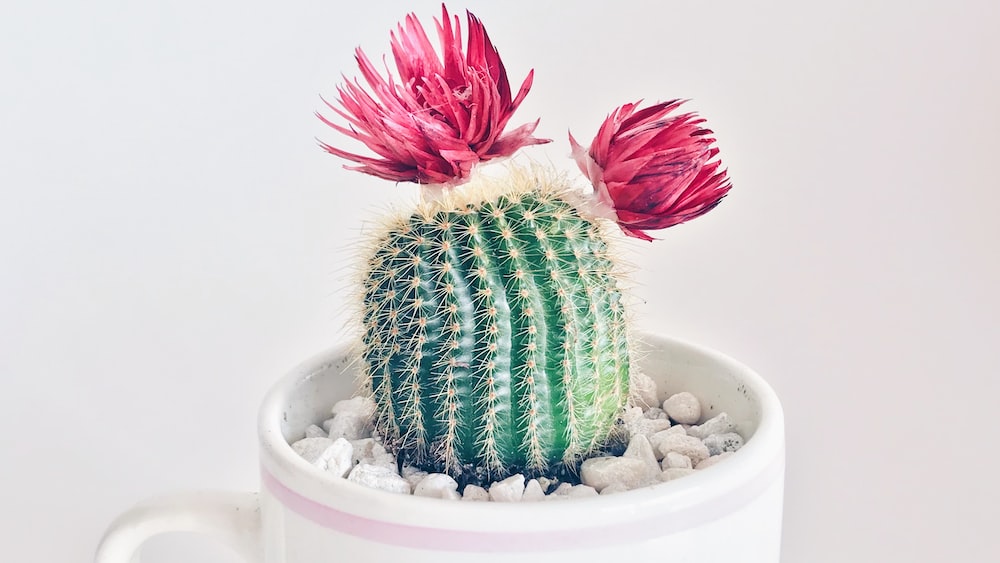
Pronouncing Rhipsalis Cereuscula
Ah, Rhipsalis Cereuscula, the name alone conjures images of luscious green cascades, much like its appearance. ‘Cereuscula’ is as it seems phonetically, pronounced like ‘-ser-ee-uss-kula’. Much like a serene desert oasis, the word flows, the individual sounds melting into each other.
Sometimes a stubborn syllable may stick but remind yourself, each challenge is a hint of progress and with resilience practice, it will yield itself, just as secrets of these fascinating plants do.
Just like the resilient Rhipsalis Cereuscula, remember that each challenge is a hint of progress, so keep practicing and embracing the flow of growth.
Pronouncing Rhipsalis Baccifera
Now, we venture towards another fascinating plant, Rhipsalis Baccifera – the mistletoe cactus. Phonetically, it is pronounced as ‘-bak-uh-fera’. Its undeniable charm stems from the play of strong consonants and soft vowels. Mastering the pronunciation of this delightful plant’s name is sure to add color to your every plant conversation!
Imagine the thrill, the bubbling pride of introducing your Rhipsalis Baccifera to your friends with flawless pronunciation. That’s the joy I wish for each one of you!
Pronouncing Rhipsalis Goebeliana
Greet the dawn of a new learning curve with Rhipsalis Goebeliana. A name that flows like water, it is pronounced as ‘-goe-be-lee-ana’. Soft and yet structurally assertive, mastering its pronunciation will be the cherry on top of your plant knowledge sundae.
Keep in mind, knowledge often presents itself like a stubborn weed, rather than a blooming flower. But with persistence, watering it with practice, it transforms. The joy of mastering these names allows you to connect with the plant and with the community of enthusiasts in a unique linguistic dance. So, take it slow, practice and make these words yours.
Tips for Mastering the Pronunciation of Rhipsalis
As we continue to unspin the world of Rhipsalis, remember that no tower stands tall without a solid foundation. Similarly, an effective strategy lays the groundwork for mastering pronunciation skills.
Practice Techniques
One technique that always comes to my aid is chunking, breaking down the word into smaller sections. Seems simple, and it is! It helps your tongue, and your brain get accustomed to the new set of syllables and sounds. Chunking allows you to take it slow, sowing seeds of familiarity with every repetition, much like planting saplings one by one until you have a thriving garden.
Next, speak the names aloud, engage your mouth, practice the sounds and feel the words forming. Just like plants, language too has a rhythm, a unique dance that blends sound and silence. Latch onto it, mold it and personalize it.
Lastly, imagine a memory palace around these names, emotionally engaging with these words. Make Rhipsalis more than a plant, more than a name. Make it a story, a cherished part of your life. Remember, practice is the manure to the seeds of learning. Water it with diligence, patience and constant effort, and soon you’ll harbor a blooming garden of phonetic knowledge.
Using Pronunciation Tools
Stepping into Sophia’s cactus-filled haven, you could hear the dulcet notes of an app gently enunciating Rhipsalis. She beckoned me closer, her eyes glinting with the customary fervor they held when discussing her beloved cacti. “Wrap your tongue around this intriguing word,” she coaxed, “listen to the way the syllables meld into one. This,” she declared triumphantly, “is the power of pronunciation tools.”
Pronunciation tools, in their diverse forms – be it websites, apps, or online dictionaries – are indeed a great aid to anyone keen on unraveling the mystery of nuanced pronunciations. They not only break the strange and unique syllables found in words such as Rhipsalis down for easy comprehension but also offer heuristic approaches to pronunciation, such as IPA transcriptions and audio aids.
Sophia swears by these tools, her top choice being the auditory kind. “There’s something so comforting about not just seeing the phonetics but also hearing them out loud. Every morning with my coffee, I listen to the pronunciation of Rhipsalis, feeling the rhythm of the word blending seamlessly with the rustling of the cacti(leaves)”, she reveals.
Pronunciation tools are a valuable resource for unraveling the mystery of nuanced pronunciations, offering easy comprehension through breaking down syllables and providing audio aids.
Frequently Asked Questions (FAQs)
1. Why is it important to pronounce Rhipsalis correctly?
The importance of pronouncing Rhipsalis correctly lies in the respect it shows for this unique species. Just as one would attempt to pronounce a person’s name correctly, affording the same courtesy to plants ensures we honor their individual identity and origins.
2. What are some common mistakes in pronouncing Rhipsalis?
Common mistakes in pronouncing Rhipsalis often revolve around the placement of emphasis on the wrong syllable. Mispronouncing the plant’s name might lead to losing its unique essence, akin to a watercolor painting washed out by too much rain.
3. Are there any tools to help with pronunciation?
Yes, there are numerous tools to help with pronunciation. From mobile apps that offer auditory guides, to online dictionaries that provide a phonetic breakdown, you’ll find an array of options for mastering the pronunciation of words like Rhipsalis.
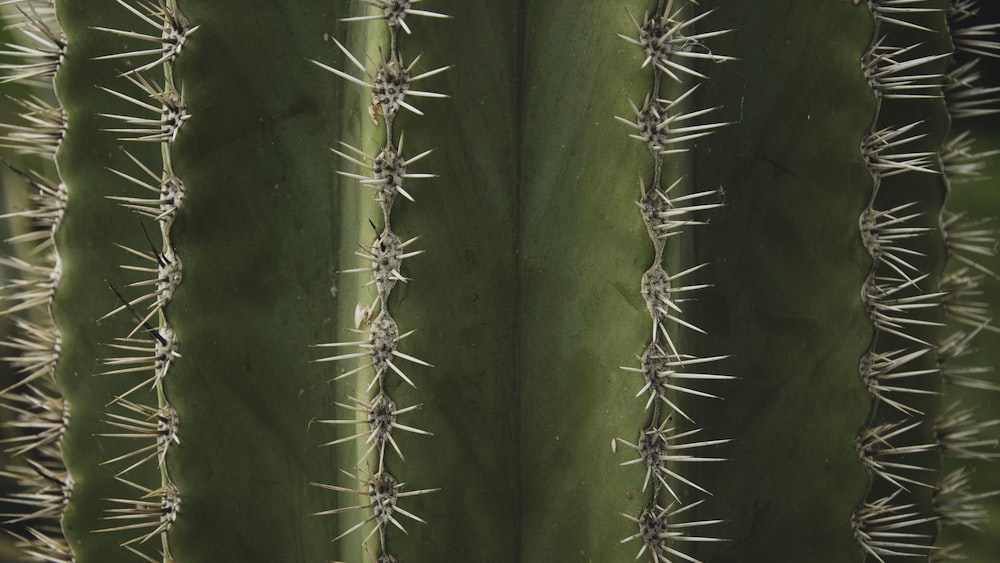
4. How can I practice the pronunciation of Rhipsalis?
To practice the pronunciation of Rhipsalis, start by listening to the correct pronunciation, then isolate each syllable, repeating it slowly and gradually increasing your pace as you get comfortable.
Conclusion
We’ve journeyed together, dear reader, through the intricate world of pronunciation, the inviting warmth of Sophia’s cacti haven, and the lyrical lilt of the word Rhipsalis. Be assured, the challenge of mastering how to pronounce Rhipsalis is part of its beauty.
May the whisper of the Rhipsalis leaves amidst your own collection spur you further in this journey of discovery. Cacti, just like language, aren’t merely dry subjects of study; they’re living proof of the vast, varying beauty of our world. Each time you utter the word “Rhipsalis” correctly, remember how your efforts are a beautiful ode to this splendid species’ unique identity.
May your love for cacti stay as enduring as their resilience, and your quest for knowledge remain as crucial as the warmth of the sun for the growth of your cacti garden.
Until our paths cross again in this vast garden of a world, keep growing and blooming. With love, Sophia.


